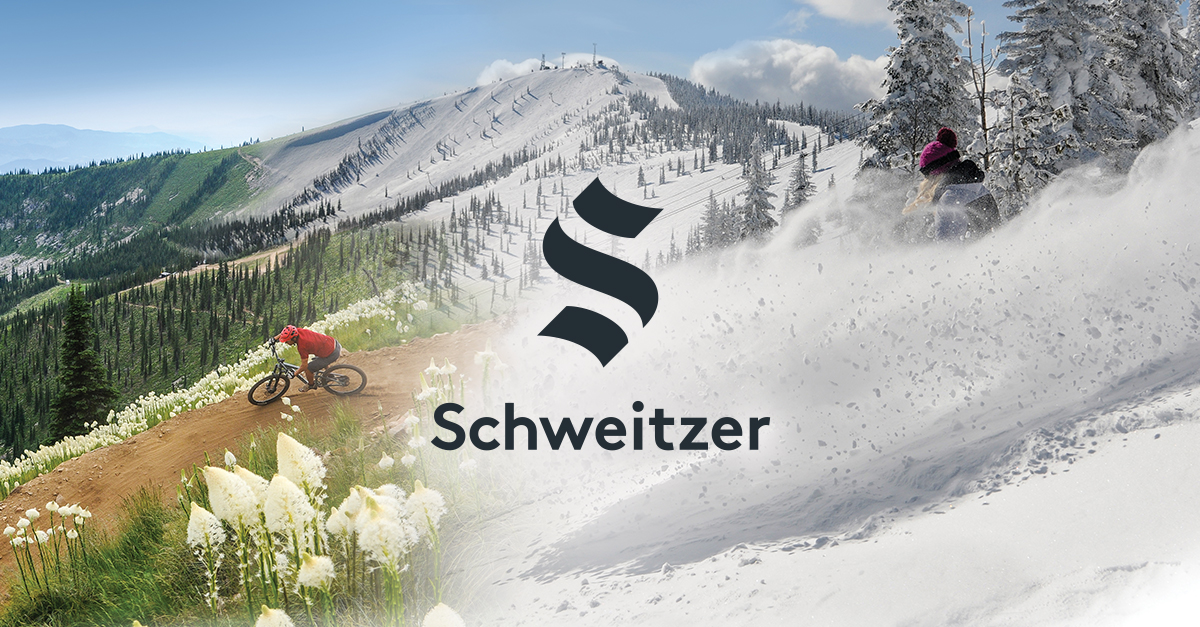jamesdeluxe
Well-known member
- Joined
- Jul 17, 2020
After two fun days at Silver Mountain (the artist formerly known as Jackass Ski Bowl), I headed north to Schweitzer Mountain. You may recall that my wife and I skied there in March 2013 and really liked it. Apparently, Schweitzer had been part of the Powder Alliance for a number of years but discontinued it for this season due to the overwhelming number of visitors they were receiving. Instead, they've made reciprocal deals with individual independent mountains like Loveland, so I took advantage of the three free days from that season pass.

If you want to know why it's called Schweitzer Mountain, here's the general story: a hermit-like immigrant from Switzerland (Schweizer means "Swiss man" in German) lived on the road to the mountain and during a police search of his house following suspicious activities they found the skins of numerous house cats that had gone missing from nearby residents. Upon questioning, he mentioned making cat stew out of them. He was later committed to a mental institution and forgotten; however, by adding a "t" -- to make it easier for English-speakers to pronounce -- the Swiss man lives on as the namesake for the biggest ski area in Idaho with 2,900 skiable acres.
From the summit, you can see three states (WA, ID, MT), British Columbia, three mountain ranges (the Selkirks, the Bitter Root, the Cabinet), and beautiful Lake Pend Oreille (French for "hanging ear" -- pronounced pond-o-RAY), which you can admire from many parts of the ski area. Topographically, the ski area is composed of two massive bowls: Schweitzer Bowl on the front side and Outback Bowl on the back side.

I skied three full days there and only saw a small total percentage of the terrain. The last two days were brilliant sunshine, which allowed for nice views of the lake. With the weather clearly transitioning into spring, the smart thing to do was stay on the south-facing runs in Schweitzer Bowl until around 11 am and then move to Outback Bowl.

The same trail further down:

The Great Divide trail along the ridgeline between the two bowls is a favorite for enjoying the scenery:

I kept running into an expert sit-skier and enjoyed watching him leave me in the dust, here toward the bottom of Outback Bowl:

Schweitzer is considered one of the best places to be on low-visibility storm days as it's filled with more tree skiing (1,200+ acres) than you can shake a stick at -- from nice and mellow to quite steep. They also added two next lifts in Outback Bowl, a high-speed quad and a fixed triple.

The building housing the Stella six-pack continues to be a favorite:

Toward the end of the day, I tagged along with a group heading toward the chutes off the South Ridge:


Due to being shaded for a good portion of the day, the farthest run, Ayer's Alley, held winter-like snow.

While it's a long flight from the East Coast, my six days in the Inland Northwest were just as successful as the previous visit and I can recommend the region to anyone looking for interesting, good-sized ski areas that aren't overrun like the usual suspects in Colorado or Utah.
If you want to know why it's called Schweitzer Mountain, here's the general story: a hermit-like immigrant from Switzerland (Schweizer means "Swiss man" in German) lived on the road to the mountain and during a police search of his house following suspicious activities they found the skins of numerous house cats that had gone missing from nearby residents. Upon questioning, he mentioned making cat stew out of them. He was later committed to a mental institution and forgotten; however, by adding a "t" -- to make it easier for English-speakers to pronounce -- the Swiss man lives on as the namesake for the biggest ski area in Idaho with 2,900 skiable acres.
From the summit, you can see three states (WA, ID, MT), British Columbia, three mountain ranges (the Selkirks, the Bitter Root, the Cabinet), and beautiful Lake Pend Oreille (French for "hanging ear" -- pronounced pond-o-RAY), which you can admire from many parts of the ski area. Topographically, the ski area is composed of two massive bowls: Schweitzer Bowl on the front side and Outback Bowl on the back side.
I skied three full days there and only saw a small total percentage of the terrain. The last two days were brilliant sunshine, which allowed for nice views of the lake. With the weather clearly transitioning into spring, the smart thing to do was stay on the south-facing runs in Schweitzer Bowl until around 11 am and then move to Outback Bowl.
The same trail further down:
The Great Divide trail along the ridgeline between the two bowls is a favorite for enjoying the scenery:
I kept running into an expert sit-skier and enjoyed watching him leave me in the dust, here toward the bottom of Outback Bowl:
Schweitzer is considered one of the best places to be on low-visibility storm days as it's filled with more tree skiing (1,200+ acres) than you can shake a stick at -- from nice and mellow to quite steep. They also added two next lifts in Outback Bowl, a high-speed quad and a fixed triple.
The building housing the Stella six-pack continues to be a favorite:
Toward the end of the day, I tagged along with a group heading toward the chutes off the South Ridge:
Due to being shaded for a good portion of the day, the farthest run, Ayer's Alley, held winter-like snow.
While it's a long flight from the East Coast, my six days in the Inland Northwest were just as successful as the previous visit and I can recommend the region to anyone looking for interesting, good-sized ski areas that aren't overrun like the usual suspects in Colorado or Utah.





